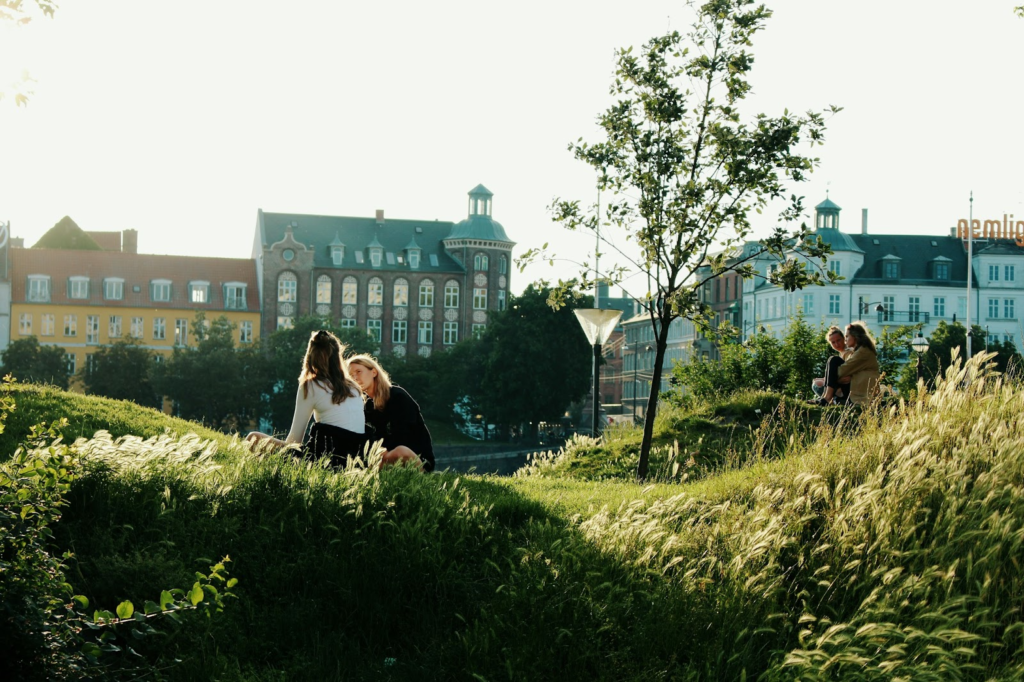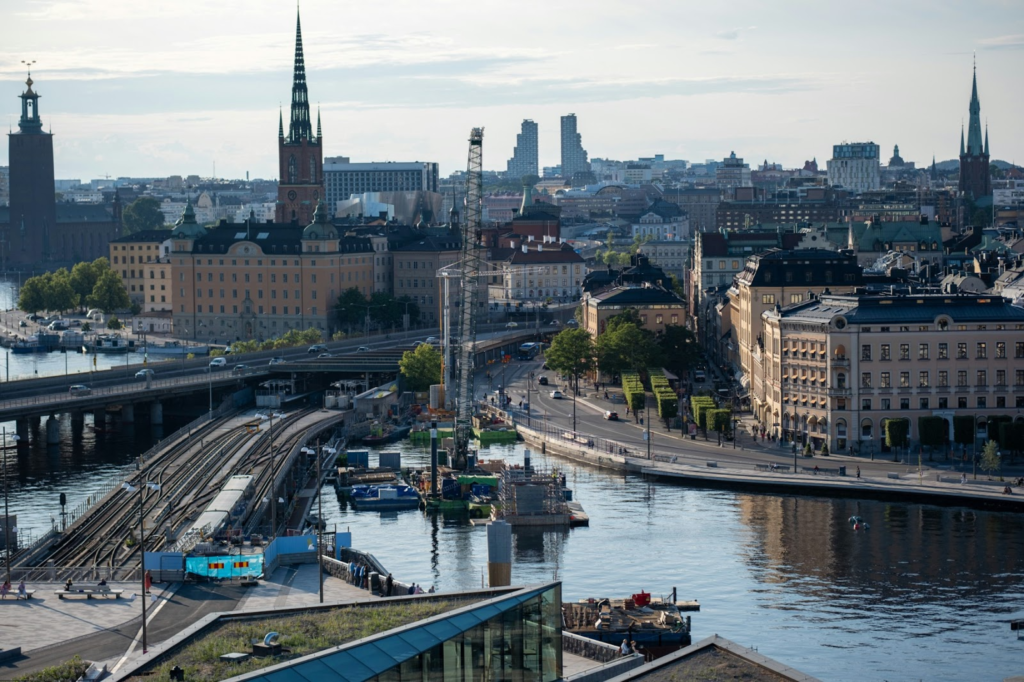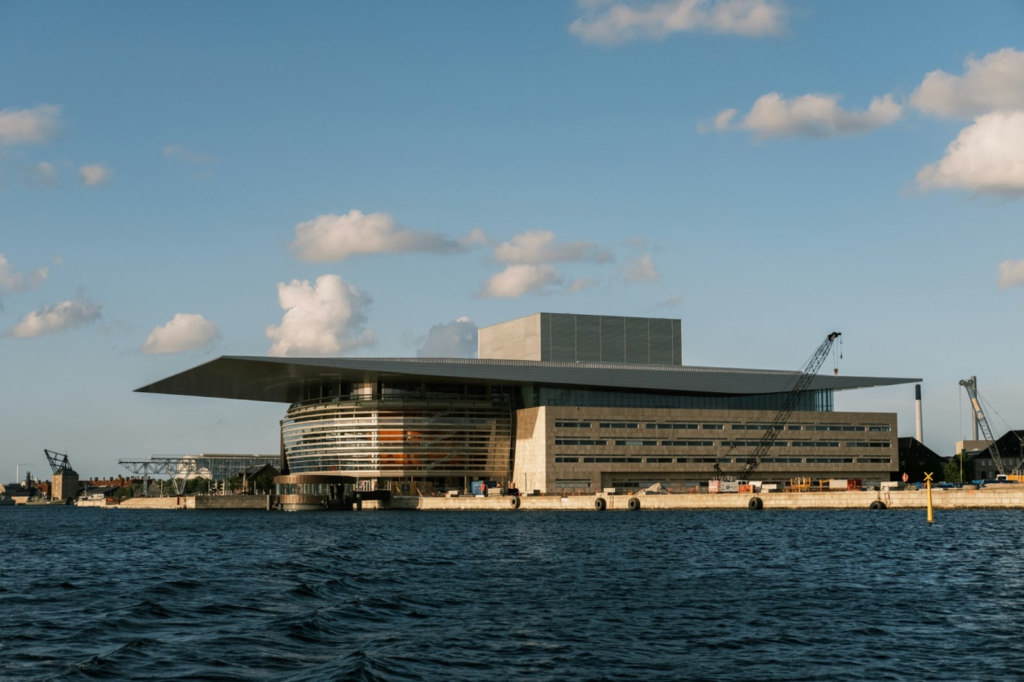Scandinavia has a way of pulling you in. It’s a region where cobbled streets whisper stories of kings and traders, and modern design stands boldly beside history without overshadowing it. Travelling from Oslo’s Karl Johans Gate to Copenhagen’s Tivoli Gardens feels like threading your way through centuries of culture, past glittering waterways, lively markets, and landscapes that make you want to press your forehead against the train window and never blink.
Table of Contents
Stockholm: Where Water Holds the City
Few capitals feel as tied to the water as Stockholm. Built across islands, the city breathes with the rhythm of the sea. Gamla Stan, the Old Town, is where time seems to slow — narrow alleyways twist between ochre-painted houses, their windowsills spilling with flowers. Cafés invite you to pause for a fika, that sacred Swedish ritual of coffee and cake, usually a cinnamon bun so fragrant you can smell it before you see it.
The city mixes the historic with the cutting-edge. Step into the Vasa Museum and you’re confronted with a 17th-century warship that looks as if it’s just been lifted from the sea. Wander along the quaysides and you’ll find sleek ferries gliding past, while in the evening, locals spill out onto waterfront terraces, chatting and laughing as the sun sets in endless shades of gold.
Leaving Stockholm feels less like departure and more like turning the page of a story. The Stockholm to Oslo trains sweep you through a landscape of glassy lakes, pine forests, and villages where red cottages peek out like postcards brought to life.
Oslo: Where Old Meets Bold
Arriving in Oslo, you’re met with a city that wears many faces. Karl Johans Gate is its heart — a broad, lively boulevard stretching from the station to the Royal Palace. Street musicians play for passers-by, the scent of fresh waffles drifts from stalls, and students gather on benches, their laughter carried on the breeze. It’s a street that feels both everyday and ceremonial, bustling yet welcoming.
Oslo rewards curiosity. The Opera House rises by the fjord like a sheet of ice, its sloping roof daring you to walk across it and see the city from above. At Vigeland Park, bronze and granite figures capture moments of tenderness and struggle, a reminder that art here doesn’t sit behind glass but lives in the open air. Down by Aker Brygge, the waterfront sparkles with life — sleek boats bobbing in the harbour, clinking glasses at outdoor restaurants, and a horizon that always feels close.
Oslo is a city that shifts seamlessly from regal palaces to daring architecture, from quiet parks to buzzing nightlife — a balance that leaves its mark long after you’ve gone.
Copenhagen: Gardens, Light, and Imagination
The Oslo to Copenhagen high-speed train brings you right into Denmark’s capital, and stepping into Copenhagen feels like arriving somewhere that knows exactly who it is. Colourful houses lean along the Nyhavn canal, bicycles outnumber cars, and there’s an easy rhythm to daily life that makes visitors feel part of it.
Tivoli Gardens captures this balance perfectly. Opened in 1843, it remains one of the most enchanting amusement parks in the world. Fairy lights twinkle as dusk falls, wooden roller coasters rattle with laughter, and outdoor concerts fill the air with music. It’s playful and nostalgic, yet always evolving, like the city itself.
Beyond Tivoli, Copenhagen continues to impress. The Royal Danish Opera House stands proudly by the harbour, a striking contrast to the centuries-old Rosenborg Castle nearby. The Danish Design Museum celebrates the nation’s global influence, while the King’s Garden, full of picnics and laughter in summer, reminds you that even royal grounds can feel intimate.
Gothenburg: The Gentle Soul of Sweden
Gothenburg may not shout as loudly as its capital cousin, but it charms in its own gentle way. Canals cut through the city, lined with leafy boulevards perfect for strolling. In Haga, wooden houses lean over cobbled lanes, their windows stacked with pastries so large they demand to be shared.
Liseberg amusement park adds bursts of laughter and light, while the city’s seafood — fresh from the North Sea — is reason enough to linger. In market halls, the salty scent of oysters and shrimp mingles with chatter as locals choose their catch of the day. Gothenburg feels lived-in, relaxed, a place where you can slow down and savour.
Conclusion: A Journey You Carry With You
The journey from Karl Johans Gate in Oslo to Tivoli Gardens in Copenhagen isn’t just about moving from one city to another. It’s about watching Scandinavia reveal itself, piece by piece — Stockholm’s watery elegance, Oslo’s regal boulevards and modern flair, Gothenburg’s gentle spirit, and Copenhagen’s playful creativity.
What lingers are the little things: the warmth of a cinnamon bun melting on your tongue in Stockholm, the cool marble beneath your shoes at Oslo’s Opera House, the salty tang of oysters in Gothenburg, and the glow of lanterns over Tivoli’s gardens at night. These are the treasures that don’t fit neatly into guidebooks but live on in memory.
Travelling by rail ties it all together. It slows you down just enough to notice — to watch the forests, lakes, and coastlines roll past, to feel the anticipation of arrival, and to let the journey itself become part of the story. Scandinavia shows that history and modernity can walk side by side, and when you take this route, you walk with them.





